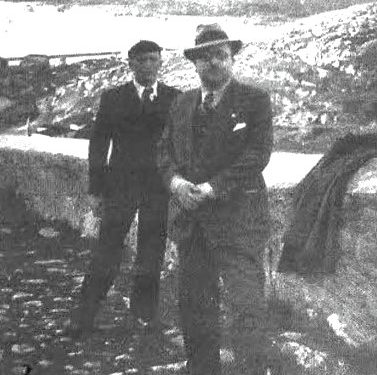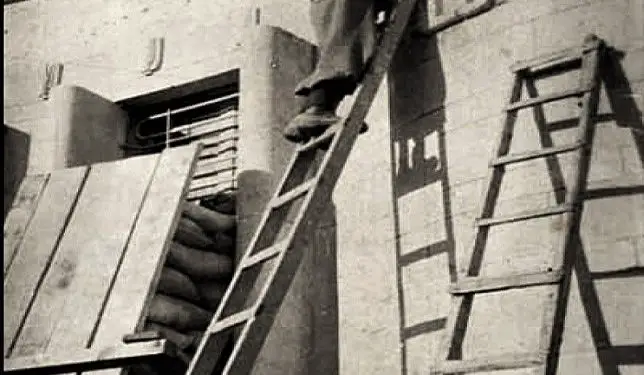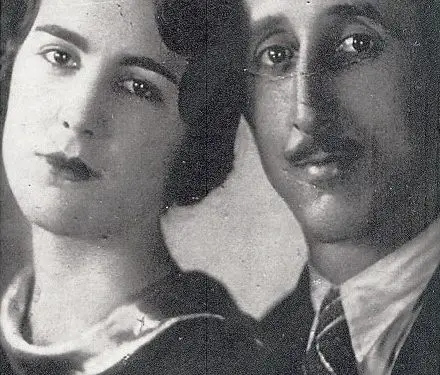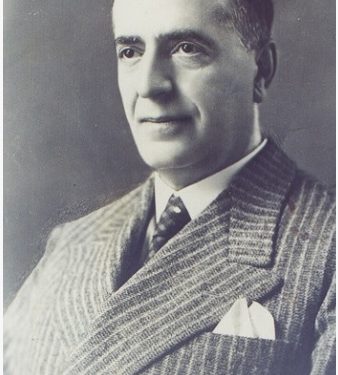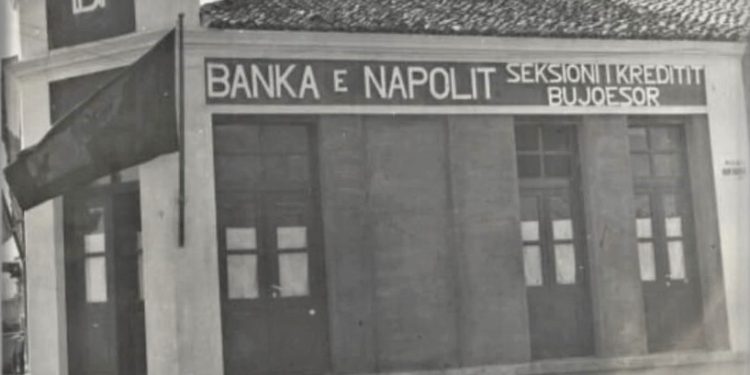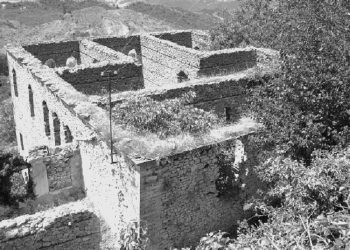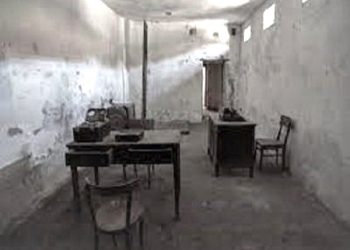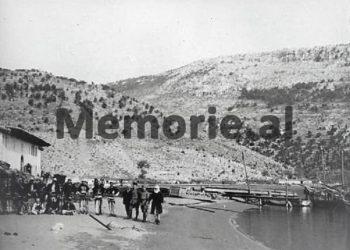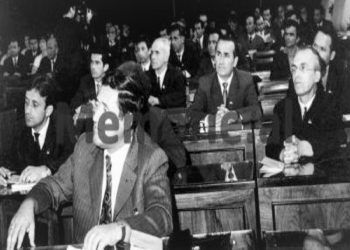By Arben Pustina
Memorie.al / From the beginning of the 1930s, Albanian agriculture was very necessary, the establishment of an agricultural credit institution. This necessity was best understood by experts in the field and constantly, the press in Albania published numerous articles, where it was widely argued that; the establishment of an Agricultural Bank would be something very useful for agriculture. Thus, on this matter, we have a number of articles written at that time, by; Mehdi Frashëri, Rrok Gera, Zija Bejleri, Vasil Kondi, Muharrem Kokona, Mark Kakarriqi, etc. Mostly about the issue of the Agricultural Bank, articles were published in the newspapers: “Besa”, “Gazeta e Re”, “Gazeta e Korça”, “Vulllneti”, “Gazeta Shqiptare”, “Ora”, etc.
In 1930, we had the approval of a law on the Agricultural Bank, which determined the general lines and principles for the establishment of this bank. But the non-implementation of the Agrarian Reform caused the adoption of some provisions of this law to be postponed until later. The Agrarian Reform itself was a big problem, since at that time it was estimated that more than 90% of the entire country’s population lived in the countryside and engaged in agriculture, while the agricultural system was very backward and was based almost entirely on the old systems of production.
As if this obstacle (the non-realization of the agrarian reform) was not enough, in January 1934, the government presented a draft law for the withdrawal of a part of the income that had been assigned to the Agricultural Bank. The difficult financial situation of that year, as well as the deficit of the previous financial year, was the reasons that forced the government to take this step. Therefore, the parliament authorized the government to withdraw from the National Bank the sum of 1,800,000 fr. gold, poured into the capital of the Agricultural Bank. The withdrawal of the fund that was intended for the Bank, the impossibility to replace this fund, as well as the economic crisis that had been going on for several years, caused the establishment of the Agricultural Bank to be postponed for several more years.
But with the signing of the March 1936 agreements with Italy, Albanian finances received support for solving some of the most pressing problems. In the framework of these agreements, the provision of funds for the opening of the Agricultural Bank was also foreseen. The opening of this opportunity coincided with the fact that one of the objectives of Mehdi Frashëri’s government (October 1935-November 1936) was the approval of the law for the establishment of the Agricultural Bank.
From the autumn of 1936, it seems that this project was going quite well and perhaps this was the basis of King Zog’s enthusiasm, who in October addressed the deputies with a message, informing them that he would soon be presented in Parliament, draft law on the creation of the Agricultural Bank of Albania. This draft law was approved in Parliament on November 6, 1936, was decreed by King Zog on November 26, and entered into force on December 9, 1936. In Article 1 of the law consisting of 84 articles, it was stated that;
“The Agricultural Bank of Shqipnis was a public and autonomous lending institution”. However, even in the future, Agricultural Bank was not rising. Perhaps there was still uncertainty about the main organizational and functional lines of the law on the bank, or perhaps the mechanisms for providing the fund provided for the establishment of this agrarian credit institution were not yet functioning. In this situation, the Albanian authorities thought to seek the help of Banco di Napoli; to solve the problems and the famous Italian bank accepted the request.
To establish the Agricultural Bank of the Albanian State, not a specialist was appointed, but one of the managers of Banco di Napoli: Dr. Francesco Frigione (1891-1975). The sector in which he had shown the most skills during his career was precisely that of agricultural credit and even Frigione had participated in the creation of this sector near the Banco di Napoli in 1927. After a few years he had managed to be director for this sector, a position he held for about 30 years. Frigione was also a member of the Administrative Council of the National Association of Agrarian Credit Institutions, a member of the Central Committee of the International Confederation of Agrarian Credit, and participated in many congresses held inside and outside Italy, where a greater development was discussed of Agricultural Credit, in different countries of Europe.
It is learned that during his youth, Frigione was a trade unionist in the banking environment, while later, in his maturity, he expressed sympathy for a deeply anti-fascist liberalism, but was later forced to change his political stance, due to the pressure of great, done to him by the fascist authorities. So this was the personality whom the General Director of Banco di Napoli, Giuseppe Frignani, had called in 1937, to establish and organize the Agricultural Bank in Albania.
Although Frigione was appointed directly for this task by the head of Banco di Napoli, in reality, the initiator of this development was the Italian government, which did not want to appear officially as such, until the moment when the work of the organizer of the Bank was acceptable to the Albanian government, which, for its part, appreciated the successes of the agricultural sector of Banco di Napoli, which was one of the oldest credit institutes in Europe, with activity that began in the 16th century.
In the notes left by the Italian bank expert, he explained that his task related to the Agricultural Bank of the Albanian State included the drafting of legislative measures for granting loans (based on the regulations of ordinary credit banks in European countries), in a Bank, which, also according to King Zog’s wish, would be transformed into an issuing bank, with an annex section, for the granting of agricultural credit.
Above we mentioned the Italian government as being quite interested in this enterprise, but this interest is even more evident in Frigione’s notes, related to his work for the establishment of the Agricultural Bank of the Albanian State. According to Frigione himself, apart from the technical side, the task assigned to him had a political character at the same time, due to the instructions given by Francesco Jacomoni, the Italian minister in Tirana. The task in question consisted of trying to win the trust of the authorities of the Albanian government and especially of King Zog, so that they would not give other countries the opportunity to finance and take over the establishment of the Bank in question.
At the beginning of the 30s, King Zog in the eyes of the Italians was already a very bad debtor, who refused to sign other treaties that would tie the country even more to Italy, and in the meantime turned to countries like England or France, to ask for economic aid and to remove Italy’s monopoly of economic intervention in Albania. Therefore, the authorities of Rome asked Frigione to win the sympathy of the Albanians, since a good result of his work would also facilitate the granting, for Banco di Napoli, of the authorization to open its subsidiaries in Albania and, therefore, the Italian influence in the country would increase.
So, not in vain, a high-caliber banking personality like Francesco Frigione was appointed for the establishment of the Agricultural Bank. After being familiar with the situation in the country, he expressed at that time that the decree-law approved on November 26, 1936, failed to organically codify the nature of special operations in aid of agriculture, nor the regulation and operation of the Institute of Agrarian Credit, so there was a need to draft a new project:
“…Without lingering on an exegetical criticism of the draft law, after a study of the real conditions and current needs of Albanian agriculture, the need for the drafting of another draft law was considered, which would not only better suit these conditions and needs, both in the goals that had to be achieved, as well as in the forms and methods of execution, but it would also discipline, first of all, organically, the performance of special operations and the functioning of the Institute”.
This draft law of Frigione provided that the Bank would have a capital of 2 million and 800 thousand gold francs, the fund for which would be provided by the Banco di Napoli and would be payable for 50 years, without interest. The capital would be used in accordance with the purpose of the Bank, i.e., to help develop the economic forces of the country and especially the agricultural ones. The project also aimed at the legal classification and discipline of agrarian credit operations, with the aim of developing all elements of the agrarian sector, improving agricultural conditions and increasing production in cultivated areas.
The regulation of the operation of the Agricultural Bank was defined in general lines in accordance with those of a banking institute under public law, established as a non-profit organization. The supervision of the Agricultural Bank would be entrusted to state bodies, through the Ministry of National Economy and Finance, which would have a delegate who would participate in the meeting of the Administration Council.
Regarding the organization of the Bank, the draft law provided for an Administrative Council composed of: a President appointed by royal decree and six advisers, of whom two would be appointed by the Ministry of National Economy, two by the Ministry of Finance and two by Chambers of Commerce, in the areas where the Bank would be present. It was also foreseen the establishment of an Executive Committee, consisting of three advisors, the General Director and a legal audit board, with a lot of experience in accounting.
It seems that by the beginning of July 1937, Frigione had completed the project for the Agricultural Bank, and in a letter he wrote on July 5, 1937, to his friend, Nicola Lorusso Attoma (at that time consul of Italy in Tirana), the Italian banking expert, he let it be known that Zogu had received him in the audience, expressing to him his deep gratitude for the work done at that time and inviting him to continue the work started, in an equally efficient manner.
Next, we have the Royal Decree dated July 19, 1937, for the “Approval and implementation of the Decree-Law on the establishment of the Agricultural Bank of the Albanian State”, and on August 1 of the same year, we have the inauguration of this Bank. Immediately, the highest Albanian authorities expressed their satisfaction for this achievement. As early as July 31, the Prime Minister, Koço Kota, expressed his appreciation to Frigione for the work done in Albania:
“… On the eve of the opening of the State Agricultural Bank, on behalf of the Royal Government, I am pleased to express the most heartfelt thanks for your benevolent interest, which you have combined with the high legal, economic and financial vision, in the organization of the Institute, which is now a fact of national life. I am very proud to inform you that the Council of Ministers, in complete unanimity and expressing all its satisfaction, has appointed you ‘Honorary Councilor of the Bank'”.
Shortly before Frigione’s departure for Italy, King Zog received him in another audience, during which he presented him with the high decoration: “Great Officer of the Order of Skanderbeg”, granted by him, thus giving us an idea of the extent of gratitude that the Albanian Sovereign felt for the Italian banking specialist. On the day that Frigione was to leave Albania, on August 6, 1937, he received a letter written by the Minister of National Economy, Terence Toçi, who also expressed his highest appreciation for the work done by the Italian expert in setting up the Bank.
Even the Albanian press of those days was filled with articles expressing great satisfaction for the opening of the State Agricultural Bank, as a historical moment, which was thought to give a powerful impulse to the development of agriculture in the country.
The congratulations of the Italian authorities were also immediate. The first was the director of Banco di Napoli, Giuseppe Frignani, and then followed by the Italian Foreign Minister, Count Ciano, who had a great commitment in Rome’s efforts to connect even further with Albania. Due to the fact that the Albanian authorities did not accept overly conditional agreements, in order not to tie themselves “hands and feet” with Rome, Ciano followed very carefully everything that happened in Albania, including the development of agriculture, the reforms, the reclamations that were being carried out by several Italian firms, etc., and all this, in the context of the intense and continuous efforts he made to achieve his goals.
On the occasion of the celebration of the 25th anniversary of the declaration of independence of Albania, Francesco Frigione was invited to be part of the celebrations, while he was in Albania to solve some pending problems, as well as some new problems, identified after two months since the Agricultural Bank started working. In a report dated December 3, 1937, Frigione wrote to Prime Minister Kota regarding the performance of the Bank and the problems identified up to that time, elements that would also be referred to King Zog.
The activity developed by the Bank from August 1 to November 20, 1937, had to do with 213 requests for loans with a total import of 231,000 fr. gold, of which 55 requests were received, for 39,000 fr. gold, 138 requests for 170,000 fr were under review. gold, while they were finally rejected for lack of guarantee, 20 requests for 22,700 fr. gold, these results could be considered satisfactory, but according to Frigiones, could and should have been better if the Agricultural Bank had been more efficiently supported by the authorities, especially those in remote areas.
Therefore, he emphasized the need for the Bank to cooperate more with the authorities, while noting that in no way should changes be made to the provisions sanctioned in the decree-law of July 13, 1937, except for some variants presented, which were simply changes of character interpretative and integrative provisions related to the credit limit and fiscal privileges of the Bank.
Also, Frigione expressed the need for a better understanding of the terrain where the activity of the State Agricultural Bank was located, as well as the need for the most efficient and quick delivery of mortgage guarantees. Frigione did not fail to emphasize the need for an educational work, for the continuous and careful propaganda of the essence of the mission of this Bank, so that the Albanian peasants are aware and understand the advantages of a healthy and safe agricultural credit they had the opportunity to make the best use of it, strengthening their personal and country’s economy.
From the end of January 1938, Francesco Frigione saw fit to address the masses of farmers and all those interested in obtaining loans for agriculture, through an article entitled: “Agricultural Bank and Albanian Agriculture”. According to Frigiones, after five months from the beginning of the Bank’s activity, it was clear that the majority of those interested were not aware of the possibility of benefiting from agricultural credit assistance, so he was writing this article.
Emphasizing that the strengthening of , was the first source of well-being, Frigione underlined, that through that article, he was trying to clarify the most important provisions of the law of the Agricultural Bank, in the hope that all those who had the authority and mission of properly, they would try to spread these words to the farthest farmer.
Initially, the organizer of the Agricultural Bank explained in his article that agricultural loans could only be given to real farmers, i.e.; to landowners who worked the land themselves, or to those who rented the land, to work it themselves. So no loans for those who, although they were landowners, did not work for them directly, but liked to have others work for them.
Farmers had to ask for real money for agricultural needs: for buying grain, for land preparation, for pruning, for plowing, for land improvements, for planting trees, for building stables, for opening wells, for fertilizer and for buying animals. , or agricultural machinery and tools. The money that was required for the land had to be devoted to the land, that is: no loan was to be used for the payment of debts, or for the preparation of the dowry of the girls who were getting married, or for the weddings themselves.
The bank could only provide a part of the expenses, which were needed for the farmers. The rest of the needs had to be answered by the farmer himself, as the Bank only helped. Loans had to be returned at the time of their maturity and non-payment of the loan on time was not allowed by law and for this, there would be no tolerance. But anyway, here Frigione underlined that there was an exception: In special cases, for example; if at the moment of the scan, the payment had not yet arrived, then the Bank agreed to postpone the payment deadline. Even in cases where the harvests (for various reasons) were few, the Agricultural Bank determined that the payment would be made the following year, partially or entirely, depending on the harvest situation.
Also, the return of the loan could be postponed in time, if the loan was due to be returned around the time the farmer bought working animals or agricultural machines. But even here the Bank wanted the farmer to actually buy what he had stated in his initial request. In the opposite case, i.e. when there was no real purchase, the farmer would be forced to return the entire amount of the loan and could even face severe criminal sanctions. 9 For obtaining a loan from the Bank, Frigione emphasized that every farmer could make a request stating the amount needed and the purpose for which the loan was taken. The request in question was examined by a Commission composed of a group of agricultural experts, and then the decision was made.
In the first months of 1938, the Italian agrarian credit expert held several meetings with his colleagues and associates, consulting on the possibility of new projects and different arrangements of agrarian credit that could be applied in Albania. In the spirit of these consultations, in March 1938, we have a new law on the State Agricultural Bank, approved in Parliament and decreed by King Zog on March 16, 1938. In Article 1 of the law, the State Agricultural Bank was defined as a public credit institution with its own legal personality, under public law. Once again, the capital of the Agricultural Bank was determined in the amount of 2, 800, 0000 fr. gold.
By the end of May 1938, the Minister of National Economy, Terenc Toçi, resigned and in his place was appointed the former Minister of Finance, Rrok Gera, who as early as 1929, had written many articles arguing the necessity of the establishment of the Agricultural Bank, as well as personally contributing to the preparation of the relevant draft law, when he was a member of the Frashëri cabinet (1936). Upon receiving the position of the head of the Ministry of National Economy, Gera was very interested in increasing the activity of the Agricultural Bank, which had started functioning since August 1, 1937.
The organizer of this Bank, Francesco Frigione, had a close cooperation with the Albanian minister, starting from the summer of 1938. According to Frigione’s memories, in a letter dated July 18, 1938, Gera had asked him to come to Albania, as it considered that it was necessary to convene the Administrative Council of the Agricultural Bank, due to the problems related to: the organization and operation of the Bank and especially to finding mechanisms, so that the Bank could extend its activity to rural areas most peripheral of the country. Frigione came to Albania and held several working meetings with Rrok Gera.
A few days after his return from Albania to Italy, Frigione wrote to the Albanian Minister of National Economy that; he greatly appreciated the support and trust he had received in Tirana from him, regarding the ways of solving verified problems. Likewise, the organizer of the Agricultural Bank of the Albanian State expressed that he found the program that Gera had drawn up, related to the Bank and its operation, to be valuable:
“….In view of my work so far and what I will do in the future, I have ascertained with pleasure that my ideas for the continuation of the Bank’s activity are fully in line with the program that Your Excellency has drawn up for this goal…”, Frigione underlined in his letter.
During the meetings in Tirana, the two protagonists of this exchange of letters did more than just exchange ideas. A concrete step that was taken by them was to consider the possibility of opening other branches of the Agricultural Bank. Thus, after forwarding the request to the Ministry of National Economy, the latter forwarded it to the Ministerial Council. In its meeting dated 4.8.1938, this Council took decision No. 874, through which he approved the creation of agencies for agricultural centers in Shkodër, Berat, Vlorë and Korçë.
How necessary this measure was and how joyfully the opening of the branch of Banka Bujqësore in Shkodër was best understood from an article in the magazine “Cirka”, August 31, 1938, which, among other things, read: “… We had the chance emphasized to me several times, the great need for the opening of a branch of the Bank of Agriculture in Shkodër, because until now, they have very little activity, which was developed in the district of our prefecture, through of the capital of Tirana.
Not only the many correspondences begging and begging for the granting of a very difficult and boring loan, but we can also say that until now our farmer, generally speaking, has not even had any knowledge of this associated institution, created exclusively for his good. Our farmer, who got used to living in the clutches of the usurer and paid me interest up to 100% on many occasions and even more, could not believe what he heard with his ears that are how I got him, he could find a loan only with 7%, qi for him, was someone like me; “forgive us”.
In November 1938, in another letter, this time written by the Minister of National Economy, for Frigiona, it was stated that; The bank continued to have problems with the extension of its activity in the peripheral rural areas, so Frigione was asked to make another visit to Tirana. Among other things, during this visit, Frigiones was suggested to take a business vehicle and visit the Bank’s new agencies; in Shkodër, Korçë, and Vlora.
As expected, in the talks between Frigione and Gera, it was agreed on the need to open other branches of the Agricultural Bank. After the request received from the Ministry of National Economy, dated December 31, 1938, the Ministerial Council convened on January 5, 1939, took decision no. 11, through which it approved the creation of agencies in the agricultural centers in Elbasan, Gjirokastër and Peshkopi.
During the talks with Minister Gera, Frigione also discussed the possibility of preparing a draft law for the establishment of cooperatives in Albania. There is not much data on how it has progressed further in this direction, but the magazine “LES BALKANS”, in its section; “La vie eqonomique et sociale”, wrote in the fall of 1938, that the Ministry of National Economy had taken the initiative to encourage the creation of agricultural cooperatives in different regions of Albania. According to the magazine, although the movement for the realization of the project was in its beginnings, five cooperatives were developing their activity in the country.
The occupation of Albania by fascist Italy also had consequences for the Agricultural Bank of the Albanian State, which by decree of the Viceroy, Francesco Jacomoni, on May 12, 1939, was absorbed by Banco di Napoli Albania, becoming a section of the agrarian credit of this Bank. The change in question also led to the end of Frigione’s office. The latter, in a letter written on May 21, 1939, to the new director of Banco di Napoli, De Simone, gave an overview of the difficulties and obstacles he had encountered in his work, for the management of the State Agricultural Bank Albanian.
According to Frigione, in his duties he had encountered obstacles of all kinds, including: the hostility of large landowners, the mistrust of some Italian political and financial circles, who also saw as competition the establishment of the Agricultural Bank of the Albanian State, the Albanian opposition with people who strongly opposed the government, as well as the opposition of some foreign legates in Tirana, who, by all means and ways, wanted to torpedo the establishment of the Bank, considered by them, as an Italian investment. Also, Frigione defined as a serious obstacle to his work, in the direction of the Agricultural Bank, the conditions in which the property was presented in Albania, which according to him, was beyond any regulation.
In addition to the endless compliments he received from the Albanian authorities for the work done, Francesco Frigione claimed in his notes that they had offered him several valuable gifts as well as sums of money, but he had not accepted them, but had only received some small sums, to compensate his travel expenses (return from Tirana to Italy), as well as the expenses of staying in the Albanian capital. But he thought that Banco di Napoli owed him a compensation for the work he had done for the establishment and management of the Agricultural Bank of the Albanian State, work which had been overestimated.
The change of the head of the Banco di Napoli, as well as the beginning of the Second World War, postponed in time the consideration of the request, which Frigione had submitted to the Administrative Council of the Banco di Napoli, and as far as is known, he never received compensation. Meanwhile, the evaluations of Francesco Frigione’s figure did not end there. In 1941, he was awarded the order “Grande ufficiale Del Regno d’Italia”, while in 1954, he was awarded the order; “Cavaliere al Merito della Repubblica Italiana”. Memorie.al




